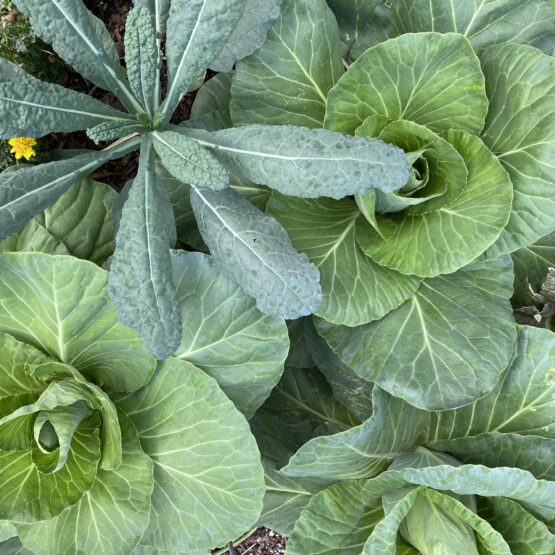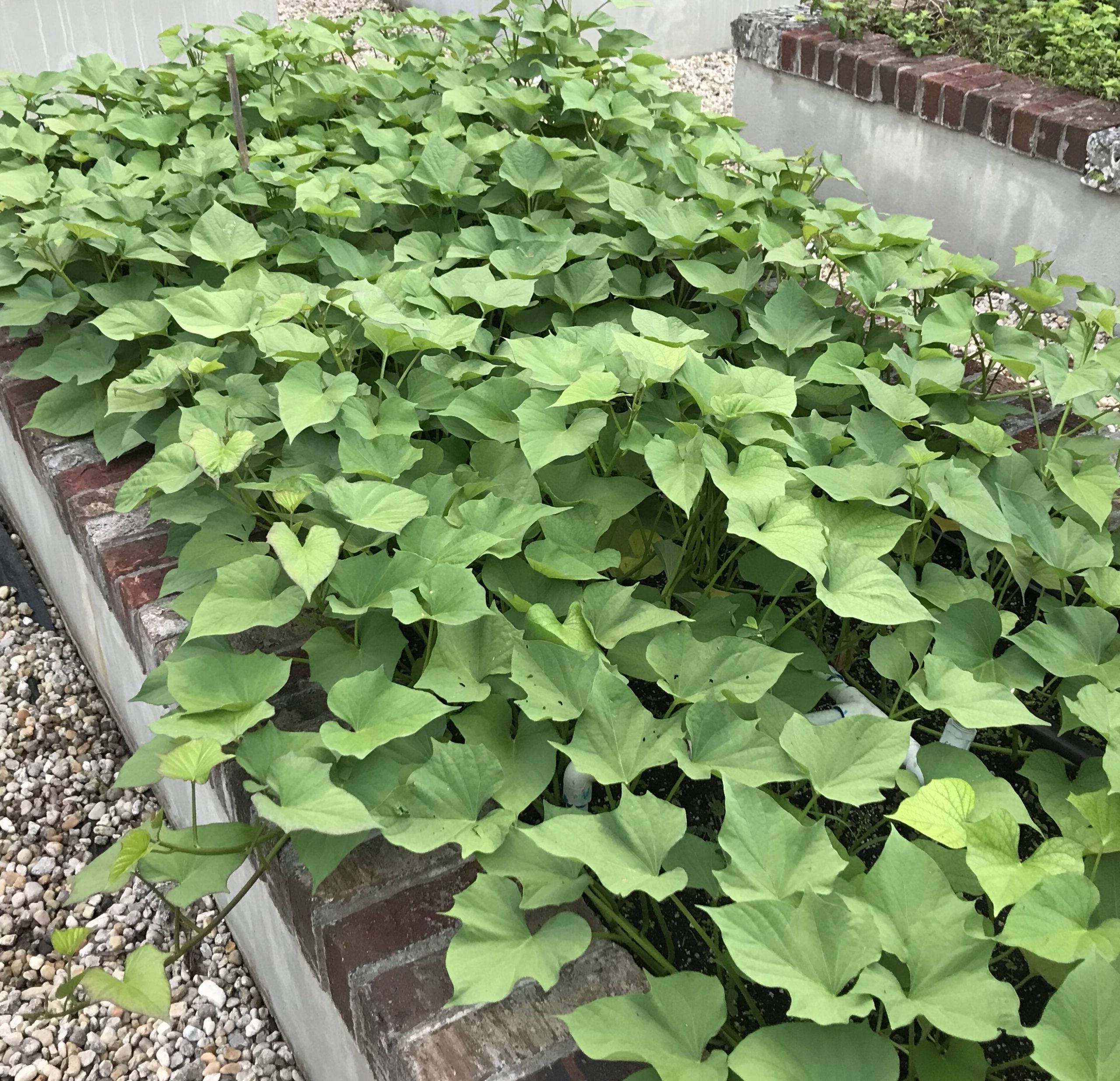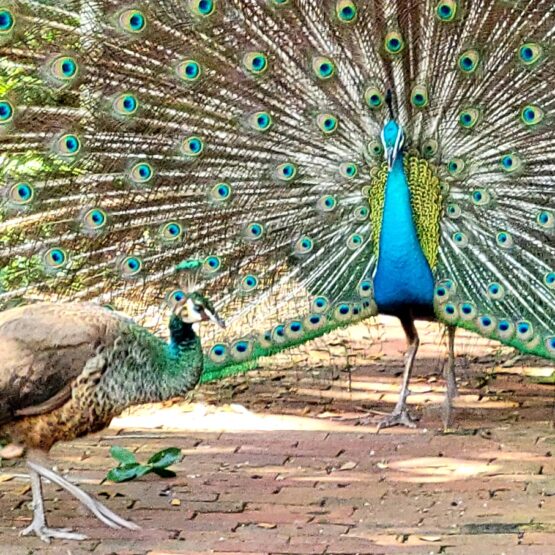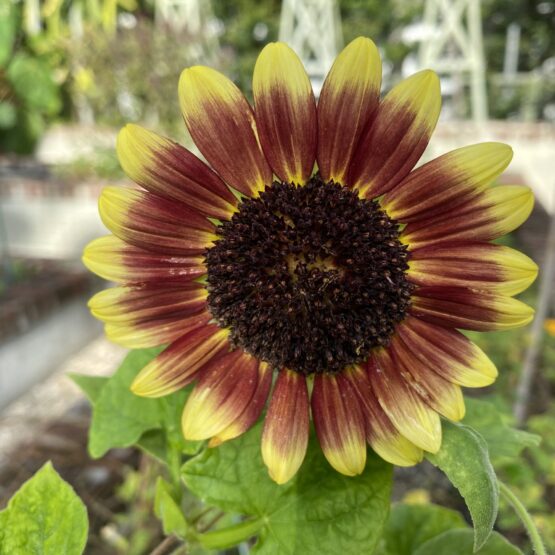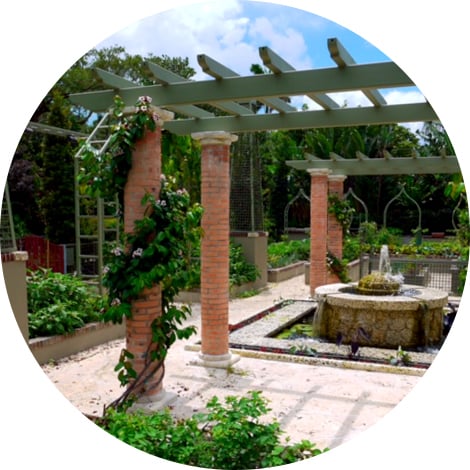
Well one of the die-hard vegetables that can make it through our long hot summer months here in South Florida is collard greens. While they take a back seat to all our other greens during the regular season, now that they are the only cruciferous left to harvest, they’ve become popular. We are lucky to have a green like this in the middle of August!
Collards are an extremely hardy crop – they are very popular in the South as they grow so easily and throughout the year. We just grow a basic type (e.g. Georgia or Carolina variety) in our garden, starting them from seed in flats and transplanting the seedlings when big enough. A few years ago, a fellow organic gardener gave me some pelleted seeds for “blue collards,” which have become one of our favorites. They really do have a bluish tinge to the usually dark green leaves.
We harvest collards by constantly taking the larger leaves from the bottom of the plant, allowing the smaller ones at the top more time to grow. The ribs are very tough and are removed for every recipe I can think of. The leaves tend to be slightly tough as well, more so than kale, so cooking them takes on a different dimension than most greens.
You may recall that collards came on the foodie scene pretty strongly a few years ago – I remember a Whole Foods bag that declared collards as “the new kale.” Subsequently many healthy recipes for collards came out, and I was happy to come across one for a raw collard salad that works really well. The leaves are broken down with salt to soften them, rather than the usual acids like lemon or vinegar that are used for raw kale salads.
Of course I am familiar with the popular slow-cooked and fat-infused collard greens as my roots are part Southern. I must confess that I love making a good “pot likker” and then cooking the collards in them. Add some homemade cornbread and I am in heaven! Fortunately, I don’t cook them forever in order to make them nutrition-less, just enough to soften them and allow them to take on a sweet flavor. And I never find the need to add sugar to collards – cooked right, there is no bitterness to overcome! A short parboiling of the greens ahead of time works wonders.
I do have some other recipes for healthier eating. My brown butter collards have always been a hit with folks, who will adamantly declare that I’m lying, that there must be meat in them – there’s not! You can also steam collards and then flavor them with a sauce or add them as nutrition boosters to others dishes such as grains.
Collard greens are unbelievably packed with nutrients – vitamins & minerals galore! They have many healthy properties to help with various types of disease (e.g. diabetes and cancer). Here are two of many, many articles out there where you can learn more about their nutritional benefits:
Stay tuned – recipes to follow!
Writing & Photo by: DK
